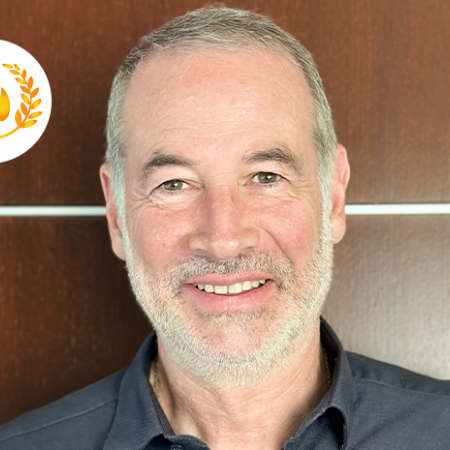June 14, 2023
The founder of Alicampo sat down ahead of his role on the white bean panel in Sydney to chat about his predictions for a diminished Argentinian harvest and what that could mean for the industry.



After twenty years in business, Alicampo continues to consolidate its reputation, and we keep on working with the same seriousness and commitment when it comes to meeting contracts and ensuring a great quality of service for our clients. Working this way has definitely allowed us to expand our presence in the global market.
In terms of some of the challenges, Argentina had a very long lockdown in 2020, which was difficult but meant a lot of demand for our products. We were selling everything we had, and aside from the difficulties it was a good year from a commercial standpoint.
This year we saw inflation and price rises all around the world, and that has really hit people's pockets, so everything is a little slower at the moment.
Last year was a good harvest despite three consecutive years of drought. The drought did mean that we harvested fewer kilos and smaller sizes of pulses.
This year, things are worse. There's an ideal window for seeding – between February 15 and March 15 – and this year there wasn't enough rain during that period which meant we couldn't seed. Some seedings started in early March and after 20 March, with some final areas being seeded in April.
Everything that was seeded in the last 15 days of March and the first 15 days of April is in doubt because we just don't know how they will turn out. The plants I saw last week in the fields look in good shape, but there's a long time to go and many of those plants will be harvested in June and July, which is the middle of winter in Argentina and carries high risk of frosts.
It's not easy to say a percentage but from what I understand from different farmers there is around 40% of the crop that was planted on time, which meant these seeds didn't get the water they needed and are unlikely to produce a good yield.
You could divide the harvest into three parts: 40% in the February/March window, then 30% a little late, and 30% even later. Everything that was planted in that February/March window suffered a lack of water, and everything seeded later is running the risk of frosts when the harvest comes.
It will be dramatic for Argentina – firstly, because I believe we're going to have a harvest of roughly 50% of what we should have, which is very little – there will be less product to sell and the country will bring in less money. Producers will also be affected economically and are going to have less funds to begin the next campaign, and when producers have less money they invest less in their production.
If you think that producers invest maybe $650-$700 per hectare, this year they are likely to only break even or perhaps earn less than that in return. When next year comes around they may take out credit to pay for things or try to invest the minimum possible – what is crucial is that the weather improves and we can get the rain we need at the right time for seeding.
In some areas that’s a possibility but in other areas producers are uniquely bean farmers and those are likely to continue with beans because it's their way of life and way of working.
Some producers of black beans might change for soy, and chickpea producers might change for wheat, but white bean producers are likely to stick with white beans – there's a lot of integration in the industry and to change over to soy would mean having processing plants left unused.
There isn't much you can do against drought, as even if you invested in greater irrigation, beans are fundamentally an extensive crop rather than an intensive one, meaning the kind of money you would need for such an investment makes it practically impossible. Especially in a country like Argentina with serious economic issues.
I've long been a member of the Chamber of Legumbres of of Argentina (CLERA) and it has been working to develop different varieties that are resistant to drought and disease over the last 15 years, but while some new varieties have been found, in the end it's also a problem of economics and it needs time and investment.
There are a lot of really good researchers doing great work to try to improve genetics of the varieties, as well as improving the timings, seeding, and fertilization of the farmland in order to produce the best quality pulses. There's also a lot of effort on the part of the state and private companies to make improvements.
Just yesterday I was in a meeting in Santa Fe where we discussed the development of new varieties of peas, because this year Argentina has lost almost its entire crop of peas – they're talking about a loss of 80%, although I can't say that for certain. The numbers are similar for chickpeas too, and yesterday they were talking about not even having enough seed to begin the next campaign.
Argentina has been solidifying its presence in international markets and sells everything it produces year-on-year. Our products are well received and there are always new destinations.
Our pulses are becoming more and more important in North Africa and the Middle East. Historically, if we're talking about white beans, the bigger ones went to Spain, Italy, France, and Portugal. Now a lot is also going to Israel, Algeria, Morocco, and Turkey – much of what goes to Turkey also passes through to Iran or Iraq.
We're also starting to sell a lot in other markets like the Philippines and Malaysia and it feels like new markets are opening up. We’re also continuing to maintain historical markets that import smaller quantities like Poland, England, Germany, Bulgaria, and Romania.
Argentina does have quite a unique situation with the US dollar because the government controls the official USD quite carefully but it's difficult for them to control the black market dollar, or dólar blue. The difference between the official dollar and the blue began at 30%, which already made it difficult to work with, but today we have a difference of more than 100%. This obviously distorts the market as people aren't ready to sell their dollars at the official rate.
We are still experiencing very high inflation – last year it was more than 100% and this year looks to be the same. Internal costs are also high, and a producer or exporter who sells their products abroad sees a rate of 230 pesos in a dollar, when in the black market it's worth 470 pesos. This causes some incredible internal economic issues.
These are spectacular events where you can join up with a huge amount of colleagues, clients, and competitors. You can learn a lot about a lot of different things being done in other countries and being done by other companies – I've been going to events by the GPC for 20 years and represented Argentina on their executive committee, so I see what you do as something extremely valuable and interesting. You've got to be there!
Disclaimer: The opinions or views expressed in this publication are those of the authors or quoted persons. They do not purport to reflect the opinions or views of the Global Pulse Confederation or its members.